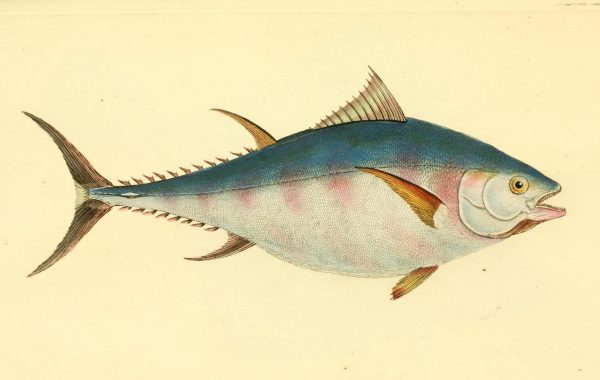The mothers check their belongings into lockers and pass through metal detectors. They learn the rules of the public gallery and the name of each judge. After court adjourns for the day, they walk to the supermarket wearing winter coats over their saris, boots sinking into the snow. Some remove their gloves to catch snowflakes, licking their palms to see if it’s true, it’s just water, while others concentrate on their wheelchairs and canes.
Under fluorescent lights, the mothers compare different brands of biscuits and squeeze loose tomatoes and onions.
One mother is the first to return to the island. She is disappointed with the straight-backed chairs, the ‘No food or drink!’ signs and the realisation that the trial is concerned with crimes and humanity, while she herself is consumed by the absence of a single person who was born on the second day of Navaratri. His name had to begin with an ‘a’ or ‘aa’, which is why she named him Ahilan.
Ahilan Sivapragasam, Pranavan Muthukumar, Keerthana Ravichandran.
The mothers have written these names on forms submitted at every administrative level. The names are now in a public database, and the list has been filed with the court as evidence.
In the gallery, the mothers sit next to diligent undergraduates and doctoral candidates who lean back, unimpressed. Many of these students will write research papers about enforced disappearance as defined in the Rome Statute. They will use ‘disappear’ as listed in the dictionary (verb, used without object) but, on the island, people are objects who receive the action: they do not disappear, they are disappeared.
In the gallery, the mothers sit alongside journalists who write for syndicates, magazines and news outlets, including those from the island. One journalist watches the mothers closely and, even when they seem bored and distracted, she writes about their resilience. Another is a staunch supporter of the defendant. He writes headlines like ‘Crocodile Tears in Kangaroo Court’ for which his editor commissions a cartoon of the mothers as sly reptiles, their eyes peering over the waterline as the defendant dangles at the end of a fishing rod.
In other cartoons, the mothers are drawn as uncoordinated puppets, their arms and legs controlled by masked, shadowy figures. The mothers are drawn on a beach, greeting ships with European colonialists dressed in tunics and jaunty seventeenth-century hats. The mothers’ saris unravel, their blouses slip open, their posters read: ‘Welcome Back’.
On the island, there are many rumours about the mother: they are actors-for-hire, their children are alive and well, their children never existed in the first place. The rumours are shared as images and text, and soon labelled by the social media company: ‘Forwarded many times’. Sometimes, the mothers like to pretend these rumours are true. Imagine, they whisper to one another, the children are safe and our bank accounts are full.
Some of the mothers are wives, some of the mothers are fathers, some of the mothers are sons. Together, the mothers form a thesis proposed by social scientists: ‘Motherhood is a normative role that is considered traditional, even passive. Consequently, it is a uniquely subversive identity with which to challenge the state.’
The gallery is enclosed in soundproof glass, which curves around the visitors to protect the courtroom from gentle reactions, such as a sob or a gasp. Even so, the mothers are too emotive and are often reprimanded. The security issue warnings: If they cannot contain themselves, they will be asked to leave.
On the witness stand, an expert testifies to the authenticity of the videos. She repeats herself calmly, describing the reaction of the human body when shot at close range. The physics involved is very precise, it cannot be mimicked with blank cartridges, she says. She is a scientist and is careful with absolute statements, By which I mean it would be very unlikely, almost impossible to reproduce.
The videos were smuggled off the island on hard discs or uploaded near real-time. Some footage is shaky. The camera records surreptitiously, hidden underneath clothes or props. The camera swings wildly as the holder of the phone sprints, clutching the device in the air like a beacon. It absorbs the rhythm of feet sinking into sand and the blast waves from each detonation.
Some footage has a steady, panoramic shot. It is not intended to evidence war crimes but a war victory, and the camera is held with confidence, even pride.
The mothers have watched the videos in documentaries and news stories. They have clicked through them on mobile phones and in internet cafés where computers whir, overheated. Often, they are assisted by relatives and volunteers who follow their instructions – stop, go back – as the mothers lurch towards the screen to inspect the bodies, some of which are half-clothed, many mutilated.
At least one mother has found her child this way.
This is the first international criminal trial with such an abundance of first-hand video. It inspires conferences with panel discussions and breakout rooms, and exhibition spaces with augmented, immersive artwork.
The videos inspire black-tie events and fundraisers titled ‘Human Rights and Digital Innovation’, the invitations are issued on thick, cream cardstock.
The videos are played in the courtroom as the trial extends from months to years, far longer than anyone anticipated. Many mothers choose to leave, boarding trains to new cities with fake documents that allow them to scrub industrial kitchens and mop office floors. Others submit paperwork and receive a notice titled: ‘Your Asylum Application’.
The mothers who remain in the gallery become sedate, almost meditative. Some grow agitated. They don’t respond to warnings, and are escorted out of the building.
One mother lingers by the courthouse doors, waiting for the defence counsel. As he walks through the exit, she throws herself at his feet.
Where is she? the mother cries. Where is my child?
The defence looks down, unable to kick her off, and the two of them remain suspended, poised on the courthouse steps as the mother weeps. A crowd forms, a photographer pushes to the front.
The photo is called ‘Mother in The Hague’, and it is compelling because of composition and texture. The lawyer’s robes are black and billow at the arms, gathering in neat, starched cuffs. The mother’s sari is striped, her pallu crushed and her pleats sag. The steps are symmetrical: a backdrop of flat, even slabs.
‘Mother in The Hague’ will run on the front page of several newspapers and be nominated for a major award. For 24 hours it will trend on many platforms, appearing in squares and rectangles alongside content from advertisers and celebrities. Some users will scroll past the image but others will pause, even zoom in.
The mother’s hair, black and grey, is gathered in a thinning plait. Her arms, outstretched, force her blouse sleeves to press into soft flesh. And her face, her face, they do not expect to be so moved by her face.
On the island, ‘Mother in The Hague’ whips up fresh fury, and supporters of the trial receive familiar threats. The same car follows them, persistent and ominous. An office is broken into. A dead dog is delivered, gift-wrapped with a lopsided bow.
The lawyer who pulls the ribbon open stands still. She does not scream or vomit but chants a prayer over the body.
Elsewhere in the capital, few hold opinions about the trial or are willing to share them. Their tone is playful but pleading, Aiyo, no politics, please.
Over the years, they have barely thought of the mothers except during protests, when the mothers cross the length of the island, marching from the villages to the city, slowing and stopping traffic.
As the mothers approach Parliament, commuters glance at their dashboard clocks, annoyed. Some feel a distant pity, which is easily soothed with a phrase, Collateral damage.
‘Mother in The Hague’ is ubiquitous, it is unavoidable. On the island, it incites a feeling that outpaces all logic, even sweeping up those who think themselves reasonable and compassionate. They are surprised by their anger, this intense desire to throttle the woman who has debased herself so fully, so irrevocably, and forced them to share in her humiliation. Somehow, the mother has turned her humiliation into their own.
In the courthouse, the public gallery is closed to visitors. The hallways are quiet.
It’s showtime, says the prosecutor, who enjoys a catchphrase.
The only mother now is the mother who is a witness. The mother has given her statement many times before. To volunteers in tarp-covered offices on the island, to badge-wearing officials in air-conditioned rooms.
For the trial, the mother is assigned an interpreter who speaks a language that is shared, but unfamiliar. The mother assesses the interpreter’s choice of nouns and verbs, her nose, chin and skin colour, but none offer a direct sign of kinship. The interpreter maintains a wilful distance, as if she doesn’t want to be considered an intimate, just a vessel for words. She mimics the tone, sometimes the posture, of who is speaking.
The mother wonders if her own words are being smoothened in reverse. Perhaps the victims’ advocate is nodding along not to her but to the interpreter. Perhaps the interpreter has fooled everyone and made it sound like the mother finished school, even university.
The mother is checked-in to a secure hotel room near the courthouse. On the day she arrives, the advocate shows her how to use the key card, the taps for hot and cold water, and the toothpaste tube with a cap that –
I know what toothpaste is, the mother interrupts.
The advocate apologises, It is a standard script. She suggests they proceed to her favourite part of orientation, the coffee machine, and offers a demonstration: lift the handle, insert the pod, push firmly. The machine hisses hot, dark coffee into a white ceramic cup.
The mother never uses the machine. She is worried that it may break and if it did, how would she afford a replacement?
In preparation for her testimony, the advocate gives the mother a tour of the empty courtroom. The prosecution will be to her right, the defence to her left, and the judges straight ahead. The mother will be wearing a headset, and it will be a simultaneous interpretation, like a dubbed movie. The mother will speak into the microphone (the advocate taps the microphone), and if it feels overwhelming (the advocate gestures towards the courtroom) the mother can close her eyes, just focus on the voice in her ear and the words in her mouth.
The mother wonders whether the defendant will appear like a celebrity, like an actor or cricketer, someone on radio or television. But when the mother faces him, it is not fear or awe she feels, but surprise.
The defendant stands to greet her. He presses his hands together and bows as if in prayer although his bow is too deep, too exaggerated to be truly reverent. The mother looks across the courtroom: already, the judges are angry, the defence and prosecutor move abruptly but everyone else – everyone else looks back at her, they look without distraction, they need her reaction to decide upon their own.
When the mother realises this, she laughs.




